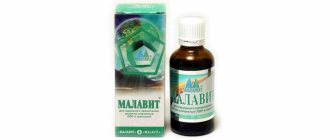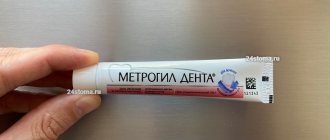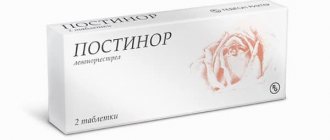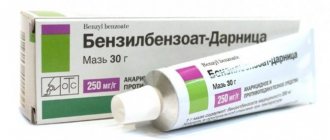Where is Chlorhexidine used?
The pharmaceutical product is used for the treatment and prevention of diseases caused by microorganisms sensitive to Chlorhexidine.
Depending on the concentration of the substance, the medicine can be used in the treatment of various pathologies.
After operations, in order to prevent infectious pathologies, doctors resort to using a pharmaceutical solution.
Chlorhexidine is often used for dental purposes for the treatment of dentures. In some cases, medication is used to treat periodontitis, stomatitis, and they are used to rinse the gums.
The medicine is used in:
- Urology
- Gynecology
- Surgery
What is Chlorhexidine used for?
An aqueous solution is prescribed to be taken in the following cases:
- cervical erosion;
- for the prevention of syphilis, genital herpes and other vaginal diseases;
- disinfection of dentures, disinfection of wounds;
- various diseases of the oral cavity.
An alcohol solution is used to treat hands and medical devices before surgery. The solution is also used to treat the working surface of medical equipment.
Vaginal suppositories are effective for the following conditions:
- in order to prevent infections that can be transmitted as a result of unprotected sexual intercourse;
- bacterial vaginosis;
- prevention of inflammation and infections before surgery, childbirth or abortion.
Contraindications
Chlorhexidine is contraindicated:
- In case of hypersensitivity to the components of the drug
- People suffering from dermatitis
- Do not use together with other antiseptics, for example, with hydrogen peroxide
- For ophthalmic use, rinsing the eyes with this product is prohibited.
- For disinfection of the surgical field
- After intervention on the auditory canal and central nervous system
It is important to know that the pharmaceutical product should be used with caution when treating children.
Is it possible to rinse your mouth with Chlorhexidine?
Rinsing the mouth with this drug helps quickly eliminate inflammation and swelling, and has a regenerating effect on damaged tissue.
It is allowed to use Chlorhexidine for a number of diseases:
- Inflammation of the gums. Helps quickly eliminate unwanted symptoms and minimizes the risk of periodontal disease.
- Stomatitis. It is used for ulcerative and aphthous forms caused by the herpes virus.
- Throat diseases. Used to eliminate negative symptoms of pharyngitis, sore throat and laryngitis.
Chlorhexidine is used for stomatitis
In dentistry, it is recommended to use after tooth extraction, if there is a risk of wound infection, or for toothache. Chlorhexidine also prevents plaque on tooth enamel and eliminates bad breath.
The drug promotes the rapid elimination of biofilm at the site of the inflammatory process - this makes harmful microorganisms vulnerable to the action of the antibiotic.
Brief instructions for use
To prevent sexually transmitted diseases, after unprotected sexual intercourse, after a maximum of 2 hours, 2-3 ml of a 0.5% solution should be administered into the urinary canal of a man, 1 ml into the canal for women and 5-10 ml into the vagina. You can treat skin areas near the genitals with the product. After administering the drug, try to postpone urination for 2 hours.
Your doctor should tell you about douching for gynecological diseases.
For sore throat, rinse the mouth with 0.5% or 0.2% Chlorohexidine solution.
For inflammatory pathologies of the urinary tract, it is necessary to inject 2-3 ml of 0.05% of the product into the urinary canal.
Before using the drug, you should consult your doctor.
pharmachologic effect
The active substance chlorhexidine destroys the bacterial lash, which leads to its gradual destruction. It is not able to cope with viruses , so dentists do not prescribe it for viral infections, with the exception of herpes.
The product has good resistance to environmental factors. After rinsing, the film remains on the mucous membranes for several hours, which is necessary to treat the disease. It is good if, before rinsing, the patient warms up the liquid a little, as this increases the antiseptic intensity. The effect persists even in a purulent environment and blood admixture.
- The benefits and harms of rinsing the mouth with sunflower oil
The use of chlorhexidine has a beneficial effect on the restoration of the body's protective cells. Chlorhexidine copes with inflammatory processes, reduces hyperemia, swelling, and promotes the regeneration of mucous tissues.
Where to put candles
Depending on the type of disease, the method of administering Chlorhexidine suppositories can be different: rectal or vaginal.
But it is important to understand that the use of suppositories is only permissible as prescribed by a doctor.
Before using the suppository, you need to wash and dry your hands well, then you need to remove it from the package and insert it into the vagina in a lying position.
To avoid leakage of the drug, do not rush to get out of bed.
Chlorhexidine suppositories help well with thrush and cystitis.
When is chlorhexidine needed? Indications
- After tooth extraction . The doctor may prescribe oral baths with chlorhexidine if the tooth was removed due to severe inflammation and not planned. During normal extractions, there is no need to make baths or rinse, so as not to damage the blood clot in the socket of the extracted tooth.
- For stomatitis . This is an inflammation of the mucous membranes of the cheeks and lips, which manifests itself in small wounds. Inflammation can be caused by various reasons: hormonal, taking medications, allergic reactions and household ones, for example, when eating crackers or seeds.
- For inflammation of the gums . In this case, you can use an antiseptic at home for pain and discomfort, but you should definitely see a doctor. Most often, the gums become inflamed due to supra- and subgingival plaque that needs to be removed. The procedure is called periodontal oral hygiene and after it the doctor will no longer prescribe chlorhexidine.
This is due to the peculiarity of the product to create a film on the surface of the teeth, to which new plaque and coloring pigments will “stick”. Therefore, after a course of chlorhexidine, a dark plaque forms on the teeth. Residues of food “stick” to this roughness, which are already difficult to remove on your own, they begin to provoke inflammation and the problem appears all over again. Thus, all the benefits of treatment are negated.
Why is Chlorhexidine better than peroxide?
- Hydrogen peroxide and Chlorhexidine are antiseptics. Medicines differ in their spectrum of effects and medicinal properties.
- Hydrogen peroxide, unlike Chlorhexidine, is available in only one dosage form, which is not very convenient.
Chlorkesidine suppositories are used for the treatment of gynecological and urological pathologies.
Both products disinfect wounds and abrasions well.
Chlorhexidine has a wider range of therapeutic effects; it is used to treat the hands of the surgeon and nurse before surgery, and it is also used in gynecology.
Dangers of using chlorhexidine mouthwash
You should not uncontrollably use chlorhexidine solution to rinse your gums and teeth; this can lead to a number of problems.
- Chlorhexidine affects not only pathogens, but also the natural flora of the oral cavity, which can ultimately lead to imbalances in the microflora. Uncontrolled use of an antiseptic has an effect on both good microbes and bad ones, but after stopping use, the bad microbes grow faster than the good ones.
- Constant use of an antiseptic can cause microflora resistance. According to recent studies, chlorhexidine causes resistance to antibiotics when they are really needed.
- Due to regular use of chlorhexidine for rinsing, intense dark plaque may appear on the teeth and tongue. This problem will have to be solved in the dentist's chair. This solution should be used only after consultation with a doctor and only for a limited period. This also applies to various toothpastes and rinses that contain it.
Book an appointment with a periodontist now by clicking the “Plus” button on the right side of your screen.
To the list of posts
Infections caused by antibiotic-resistant microflora represent an ever-growing threat in both hospital and community settings. Nosocomial infections lead to a decrease in the effectiveness of therapy, an increase in the duration of hospitalization and an increase in mortality.
Chlorhexidine bigluconate was developed in Great Britain in 1950. It is the first internationally recognized antiseptic for skin and wounds. One of the advantages of chlorhexidine, in addition to its pronounced antimicrobial effect, is its ability to bind to various biological substrates while maintaining its antibacterial activity, and then be slowly released, which leads to the preservation of effective concentrations of the drug. To date, there are no reports of resistance to chlorhexidine, despite more than 60 years of active use of the drug in the clinic. Chlorhexidine gluconate remains important in the prevention of nosocomial infections.
Widespread use of antiseptic methods for the prevention and treatment of infections followed the publication of Joseph Lister's The Antiseptic Principle in Surgical Practice in 1867. At the same time, “Lister’s antiseptics” met ardent opponents, whose main argument was the toxicity of the antiseptic they used (carbolic acid). Despite the availability of numerous antiseptics, the question of the safety and effectiveness of this group of drugs remains constantly relevant. The “longevity” of chlorhexidine and the prospects for its further use as one of the most powerful antiseptics widely used in clinical practice is a pressing issue for clinicians.
A cationic detergent (detergent), later named chlorhexidine, was synthesized during the development of antimalarial drugs in 1947. This compound has bactericidal antimicrobial activity, especially against gram-positive microorganisms. Of the 10,040 compounds, the first to enter the market was chlorhexidine gluconate, registered in 1954 by Imperial Chemical Industries Co.LTD (UK) as “Gibitan” - the first internationally recognized antiseptic for the treatment of wound surfaces and skin. In 1957, only 3 years after entering the market, the indications for its use were expanded to include not only skin treatment, but also use in ophthalmology, urology, gynecology and otorhinolaryngology. In 1959, chlorhexidine began to be used to control bacterial plaque, leading to its widespread use in dentistry. Currently, in clinical practice, chlorhexidine is preferred not only when treating the skin (hands, surgical field), but also as an oral antiseptic, including for the prevention of nosocomial infection. The most commonly used concentrations are 0.2% and 0.12% solutions. In addition to its effect on plaque and gum condition (gingivitis), chlorhexidine is effective in the prevention and treatment of caries, secondary infections after dental procedures or implant placement. Chlorhexidine reduces the bacterial load and the risk of bacteremia after dental procedures. It is also used in the treatment of recurrent atrophic stomatitis and stomatitis associated with the installation of dentures, primarily in groups of patients with orthodontic appliances and immune disorders. One of the main advantages of chlorhexidine, in addition to its powerful antimicrobial effect, is its ability to retain its antimicrobial activity when bound to various substrates. At the same time, it is released slowly while maintaining an effective concentration. This property is known as substantiveness. Chlorhexidine is not susceptible to blood, pus, or saliva. Chlorhexidine is pharmaceutically incompatible with soap and detergents (for example, those containing lauryl sulfate), alkalis and other anionic compounds (colloids, gum arabic, carboxymethylcellulose), and iodine. Compatible with ethyl alcohol, benzalkonium chloride (contained in contraceptives for local use Pharmatex and Benatex). Ethanol enhances the effectiveness of the drug. The bactericidal effect increases with increasing temperature. At temperatures above 100°C, the drug partially decomposes. Used in a neutral environment; at pH 5-8 the difference in activity is small; at pH above 8 it precipitates. The use of hard water reduces bactericidal properties. Compatible with drugs containing a cationic group (benzalkonium chloride, cetrimonium bromide).
The unique combination of properties of chlorhexidine also determines the variety of dosage forms.
Chlorhexidine is available in the following forms: • 20% concentrated solution – intended for dilution before use, used in medical institutions; • 0.05% solution in plastic and glass bottles of 70 and 100 ml - used without dilution, including at home; • Vaginal suppositories (suppositories) “Heksikon” containing 0.016 g of chlorhexidine, 1 or 10 suppositories in a package; • Vaginal suppositories (suppositories) “Heksikon D” containing 0.008 g of chlorhexidine – intended for children, 10 suppositories per package; • Gel containing 0.5% chlorhexidine. Chlorhexidine is included in the following preparations: • Solutions for mouth rinsing for dental diseases and manipulations (tooth extraction, opening of abscesses, professional cleaning, etc.) – Elgidium, Amident, Eludril; • Gels for gums, intended for the treatment of dental diseases and pain relief in the oral cavity (for example, when getting used to dentures), one of the components of which is chlorhexidine - Dicloran Denta, Elugel, Metrohex, Parodium, Elgifluor, Dentamet, Metrogyl Denta; • Elgidium toothpaste; • Solutions with other antiseptics – Baktoderm (with benzalkonium chloride), Chlorhexidine alcohol spray – for the treatment of skin infections, Citeal (with hexamidine and chlorocresol) – for topical use in gynecology, dermatology; • Ointments Bepanten plus and Depantol (with panthenol - wound healing effect), Bemilon (with betamethasone - anti-inflammatory effect); • Vaginal suppositories Depantol (with panthenol) – used in gynecology after surgical interventions; • Chlorhexidine in combination with lidocaine for local anesthetic action in the Lidocaine-Asept spray and Instillagel and Kategel gels with lidocaine; • Lozenges for sore throat, stomatitis and other diseases of the oropharynx and oral cavity – Hexoral tabs, Anti-Angin formula, Sebidin.
Chlorhexidine bigluconate
25, 40, 50, 60, 70, 80, 90, 100 ml of the drug in dark glass bottles, sealed with plastic caps and caps, or polymer caps made of polyethylene and polymer screw caps made of polyethylene, or polymer screw caps made of polyethylene, or stoppers polyethylene and polyethylene caps, or plastic caps with sealing elements, or plastic caps and plastic screw-on caps, or polyethylene caps, or caps with polymer sealing elements and polymer screw-on caps, or plastic caps, or polymer caps, or polymer screw caps, or polymer plugs and screw-on polymer caps, or polyethylene plugs and caps, or sealed with aluminum caps
25, 40, 50, 60, 70, 80, 90, 100 ml of the drug in polymer bottles made of polyethylene terephthalate complete with polymer caps made of polyethylene, or in polymer bottles made of PET, or HDPE, or LDPE complete with polyethylene caps, or in polymer bottles made of PET or high or low pressure polyethylene type FL complete with stoppers made of high pressure polyethylene and polymer caps made of high or low pressure polyethylene or polypropylene, or in polymer bottles made of high or low pressure polyethylene type FL complete with stoppers polymer and polymer caps made of polyethylene, or into polymer dropper bottles made of LDPE, or HDPE, or a mixture of LDPE and HDPE complete with polymer dropper caps made of LDPE or HDPE and screw-on polymer caps made of HDPE, or into polymer bottles made of PET complete with polymer screw caps with first opening control made of high or low pressure polyethylene or polypropylene.
A label made of writing paper, label paper, or a self-adhesive label is attached to each bottle.
Each bottle, together with instructions for medical use, is placed in a pack of boxed cardboard for consumer packaging or chrome-ersatz cardboard.
It is allowed to print the instruction text on the pack.
It is allowed to pack bottles (from 20 to 200 pieces) without a pack with an equal number of instructions for medical use in a group package (for hospitals) (cardboard box, corrugated box).
5, 10, 20 liters in polyethylene canisters (for hospitals) made of high-density polyethylene, sealed with screw-on plastic lids made of high-density polyethylene with gaskets.





